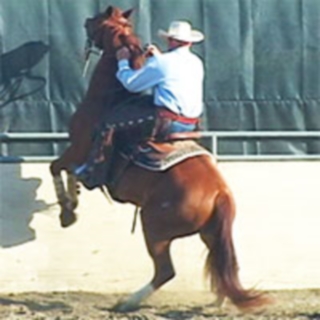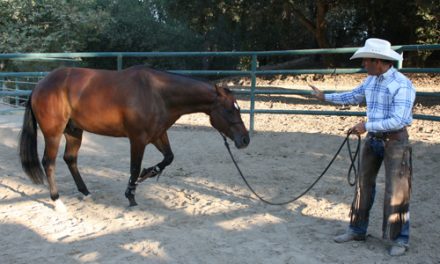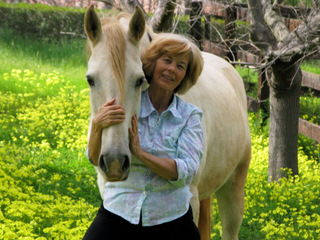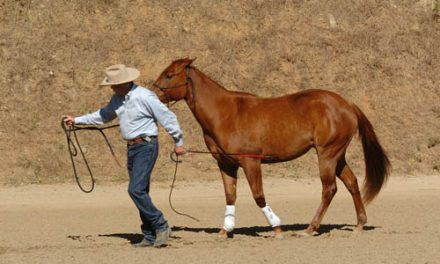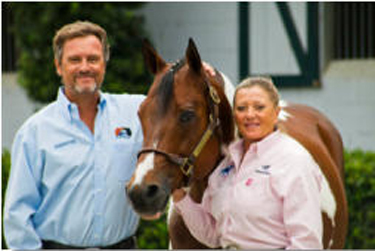A pro’s advice about horses with bad behavior problems
and what to do about it.
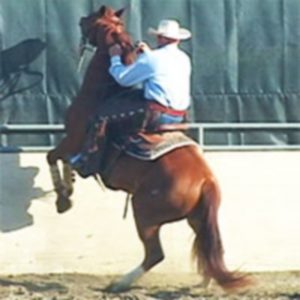
Larry Trocha
Does your horse have any of these bad behavior problems?
Bucking, rearing, biting, kicking, balking, pushes you around, won’t go where you want, etc, etc.
If your horse has any of the problems listed above or is just difficult to deal with in general, then the following information may be just what you’re looking for.
You see, what every single one of these behavior problems have in common is that their ROOT CAUSE is usually the horse’s lack of RESPECT for the people who ride and handle them.
There are exceptions to this rule but I’d say about 90% of the horse problems I see are caused by a lack of respect or a lack of control.
As a horse owner, this type of behavior can be hard to figure out. That’s because its kind of like a “catch 22″ situation…
The horse misbehaves because he doesn’t respect you. And he doesn’t respect you because you can’t control him. And you can’t control him because he weighs 1000 pounds and is misbehaving.
It’s a vicious circle and a tough combination to deal with if you don’t know how to handle it.
In the beginning stages, many horse owners aren’t even aware that their horse is being disrespectful toward them. They have a hard time recognizing it. That’s because this behavior starts out very subtly and gradually gets worse over time.
This “respect” thing is a natural part of a horse’s instinct and is related to dominant or submissive behavior when relating to other animals… including people.
In a herd of horses, every member has his place in the pecking order. The top horse is dominant over all the other horses. And, the horse at the bottom is submissive to all the other horses in the herd.
The dominant horses have the respect of the submissive horses and always get their own way. The submissive horses get no respect from the dominant horses and are always being pushed around.
The horses in the middle will be dominant to certain members and submissive to others. It’s the natural way of the horse. In all relationships, in all encounters with others, a horse will be either dominant or submissive.
How does a horse become dominant?
He becomes the dominate horse if he can CONTROL the other horse and MAKE HIM MOVE out of his way. If he can control the other horse, he in affect, becomes the submissive horse’s leader.
A dominant horse will be the one who kicks or bites any horse who crowds him or invades his space.
He will also exhibit his dominance by crowding, pushing or invading the space of other horses. He’s exerting his control.
Read the paragraphs above again. They are key.
Now, it’s not always the biggest or physically strongest horse who is dominant. Sometimes its a small horse. But it is always a horse that is willing to “impose his will” that wins dominance over the other horses.
When I was a kid, I had a little 14 hand tall palomino stallion. He ran with all the other horses out in the pasture. Even though he was the smallest horse of the bunch, he ruled over every single horse in the herd.
Why? How? Because he really wanted to and was willing to fight for it.
You see, he had the willingness to fight for dominance.
He certainly wasn’t the strongest horse in the herd. But he was the one who, “in the blink of an eye”, would turn and kick the heck out of any other horse that tried to push him around.
Now, the vast majority of horses prefer not to fight.
They are timid by nature. They may put on a good bluff but when their bluff is called, they back right down. So, any horse that exhibits even a little bit of aggressiveness is usually the winner.
How does all of this relate to you and your horse’s behavior problems?
Well, like it or not, the horse sees his relationship with YOU the same way he sees it with another horse.
One of you is going to be dominant and the other is going to be submissive. Naturally, the horse would like to be the one who is dominant.
Now, if the horse insists on getting his own way and you don’t correct him, you are in for trouble. He’ll get bolder and bolder and that’s when the behavior problems start.
Be aware, bad behavior doesn’t happen over night. It comes on little by little.
To have a good relationship with your horse, you have to be the dominant partner in the relationship. You have to make sure the horse sees you as his leader. This is what wins his respect, trust, and willingness to please you.
How do you go about this? Well, there are several different methods to get this done but in reality there is a definite “right way” and a definite “wrong way” to go about it.
One way is to just do what another horse would do out in the pasture — turn around and “whomp the bejeezus out of the horse every time he does something wrong.
This will gain his respect… and it will get him to mind you.
However, there is more to it than that.
There are usually other ways of dealing with this type of problem. (Of course, with really bad or dangerous horses, a GOOD, HARD SPANKING is a lot better than doing nothing at all).
Usually, thoroughly teaching a horse to willingly and immediately move out of your space will go a long way in gaining his respect.
Ground exercises of moving the individual parts of the horse’s body works great.
On the other side of that coin, trying to “pet” the horse into respecting you definitely won’t work. Feeding him cookie treats won’t do it either. You have probably already tried both and found they only make the horse worse.
Gaining a horse’s respect & trust requires the proper balance of… training, discipline and rewarding
the horse’s willingness to try for
you.
Read the above line again. It’s important.
Knowing how to do this is the key to transforming your problem horse into a dream horse. The kind of horse you have always wanted. It’s also the key to maintaining a good relationship with your horse. Keeping a good horse good.
I just can’t emphasize this “respect” issue enough. Without it, you just don’t have a good horse. You’ll have a hard time training him. And you’ll have a hard time handling him.
The techniques used to gain a horse’s respect and trust are not complicated or difficult to learn. Just about anybody can do it if they know what to do.
To achieve good results, a horseman needs to know WHAT training methods to use, HOW to apply those methods and WHY those methods are appropriate.
Want to see videos of exactly how to accomplish this?
Go to my horse training website.
On the website, check out my online training course titled, “Groom, Saddle, Ride & Fix Bad Behavior Problems“.
Watch those videos to learn how to fix just about any behavior problem you can imagine.
Including horses that rear, buck, balk, kick, bite, spook, are barn sour, buddy sour, won’t cross water and won’t go where you want.
Well, this wraps it up for this issue of the Horse Training Tips Insider. I hope you liked it.
Until next time, have fun training your horse.
Larry Trocha
Reining & cutting horse trainer, Larry Trocha
Reining & cutting horse trainer,
Larry Trocha
About the author, Larry Trocha
Larry Trocha lives in Acampo, California where he trains and shows horses for the public.
Larry also offers instruction to riders who want to learn reining, cutting or reined cow horse.
You can contact Larry via his website: www.HorseTrainingVideos.com

